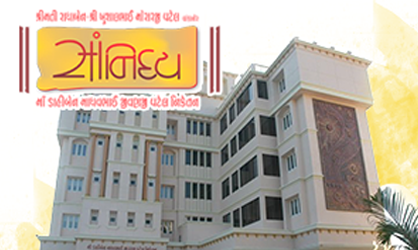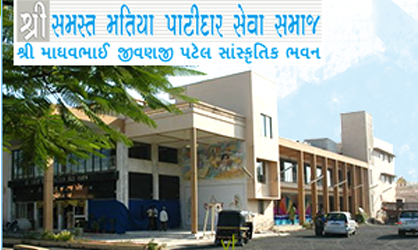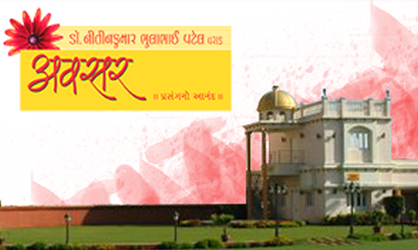Our history dates back as far as 1500BC, our forefathers were Aryans. According to the books kept by the Baroths and the Vahivanchas, the Patidar are originally from Panjab. Our history shows that our forefathers were industrious, intelligent and hard working people, who had strong believes and values, which are amongst the most important assets that they have given to us. Around AD 1000, the Badhshah of Afghanistan attacked and conquered Punjab. The Hindus were forcefully converted to the Islam religion. Our forefathers left Punjab to escape from the atrocities of the Afghan king. The people who left Punjab were KANBI from Leava and Karadvillages of the Gujaranwaladistrict (presently in Pakistan). Even today there is a group of people of the KANBI caste in the villages of Punjab. The people that came from the village Leava became known as the Leava Kanbi and those from the villageKarad became Karadva Kanbi, which was shortened to Kadva Kanbi.
These KANBI people left Punjab for Marvad with what little belongings they could fit on their bullock carts. It was the fame of Rajah Bog, widely known at time, which attracted our forefathers to that region. At that time Marvad was very densely populated and it was not possible to acquire enough land. After staying for a short period in Marvad, they left for Khambhat (Kheda District in Gujrat) on hearing that there was uncultivated land available and this brought them to Gujarat. At this time the Solankis were ruling Gujarat. The land in the Taluka of Patlad which was uncultivated was granted to us by the Solanki king. Land equivalent to about one Gam (village) was granted to each family and the Kanbi people settled on this land. The Kanbis being hard workers managed to cultivate the land with great benefits. It was decided that a twelfth portion of the crop would be given to the King in return for the land. But the cost of collecting this twelfth part from each farmer was very high so the king drew up an agreement and appointed a headman for each village. The records of the kingdom and of the crops were kept on the PAT (record or log book) and the person who entered and kept these records was known as Patlikh. Patlikh was shortened to Patal and then became PATEL.
As time went by, the kings and the kingdoms changed and so did the portions of the crops given to the kings. The main industry and income of the kingdoms was agriculture and the kingdoms were sustained on the income from the farms. Then Khambhat became the kingdom of the Mauryavansi and the crops collected from the farmers were different each year. It was high at times and low at the other times and was dictated as per the need of the kingdom and hence this part of the kingdom became known as Charotar (from Chad climb up and Utar – climb down).
Around A.D. 1400, Mohammed Bagdo became the next ruler of Gujarat and took a third of all crops and outlawed any stealing. To improve farming, he chose the best farmer from each village and handed those farmers the land. In return he asked the chosen farmers to improve the farming, provide security for that village and make the village prosperous and pay the kingdom on fixed cash base (bandhi avak). This way the tradition of giving part of the crop to the kingdom was abolished and a permanent propriety of the land was granted. Whoever had the propriety of the land were called PATEDAR which changed to KANBI PATIDAR and then became PATEL PATIDAR. This way once again the Patel Patidar became the owners of each village. From then on the Patel Patidar has maintained themselves as Patidar, and cultivated land by hiring farm labor, and the villages of Gujrat prospered once again.
When the Kanbis first came to Kheda from one of the first villages to be established in the Petlad Taluka, were Saujitra, Naar Bhadran, Karamsad, Virsad, and Dharmaj. These villages slowly became over populated and this brought shortage of houses and agricultural land. In the beginning each family had about 5000 viga land but when that land was passed on to the successive generations, the share to each family became smaller and smaller which in turn made the families poorer. Between A.D. 1820 and 1830 some of the poor Leava and Kadva Patidar families decided to move towards South Gujrat. They settled around Surat. The surrounding areas of Surat were dense forests which the Leava Patidars cleared and cultivated the land. Houses were built from the timber of the same jungles and then villages were established.
In the beginning there was a link between the Patidars of the Kheda and that of the Surat but as transportation was difficult, the link started to weaken. The main means of transport at that time were bullock carts, horses and camels. It took 10 to 12 days to travel between Charotar and Surat. (The railway first came to India in 1860 and the first rail route was between Bombay and Thane.) Relatives from Surat and Charotar visited each other but the contact gradually decreased over the generations and in the end all links were cut off. Right from the beginning, marriages between the Patidar of Surat and that of Charotar had ceased as this could take over 20 to 25 days of travel.
Between 50 and 60 villages were established by the Patidars who came to Surat, about 50 to 60 houses in each village. They built big homes as there was plenty of land. The Khacho (empty land at the back of the house) known as Vaado, in Surat, were big and so each house had their own well for water. They also had stables built with their houses for the cattle and had an Ukardo for the cattle manure. They also kept a Khari (plain clear space) in the “Vaado” for bringing in the crops. All these facilities were incorporated in each house. Again, the Patidars were hard workers and in a short time started to live comfortably and happily.
There are three different stories as to how we became the Matiya Patidar, but they all have one thing in common and that is the strong values and believes that our forefathers refused to let go. In one story, it is said that around 1850, some Leava Patidar started a pilgrimage to Kashi by bullock carts. On the way they camped at various villages, and after few weeks they reached to a Village called Pirana, near Ahmadabad. In Pirana there was a devout man named Imamshah, who heard of this group of pilgrims and went to meet them. He invited them to dine with him that night. Imamshah himself was a vegetarian and so he always offered vegetarian food to all visitors who came to his village, be they Hindus or Muslims. They talked till late in the night. Then Imamshah asked if he could give the darshan of Kashi Visvanath here, would the group go back. Some people from the group agreed though others objected to this idea. The group that did not agree continued their journey to Kashi. The others stayed with Imamshah, who taught them that whoever has a pure and clean mind and heart does not have to go on any pilgrimage and that whenever a devotee wishes to see his God, God will himself come to him and give darshan. They accepted Imamshah as their Guru and returned to their villages. The other group, after completing the entire pilgrimage, returned about one year later. When they learned about this dual religious practice, the Panchayat (group of 5 people, chosen by the village people as judge), was furious at this and ruled that the Hindus can only worship Hindu Gods and can not take Imamshah as their guru. Whoever disobeyed this ruling would be Nyatbarh (outcast). Some of Imamshah’s disciple saw this as a threat, so they went on a Mat (revolt), and they continued their dual religious practice and formed their own Panchayat. Panchayat from both sides than ruled that from then on there would not be any marriages between the two groups nor would there be any other social relations with each other. From then onwards the Patidars who had gone on the mat became known as Leava Matiya Patidar and later became known as MATIYA PATIDAR. The Matiya Patidars that broke away from the Leava Patidars were also joined by their families and relatives and started their own separate society. Even today there are some villages of Matiya Patidar, in which there are houses of Leava Patidar.
There is another story associated with how we became the Matiya Patidars. In which it’s said that when British invaded India, and started demanding levy (tax) on their crops, some the Patidars refused to pay and went on a Mat. They became known as Matiya Patidars.
Another reason for parting from the Leava Patidar was that many people were tired of following the extreme traditions of the Leava Patidar Samaj. The parting gave them an opportunity to change the traditions to their own view of life. One of the improvements was the abolishing of Dahaij (dowry) system because the poorer Leava Patidars found it extremely difficult to get their daughters married. At times, when they could not come up with the dowry, the girls remained spinsters and had to spend the rest of their life with their brothers and sisters-in-law (bhabhi). Thus the dowry system was totally abolished and a ruling was passed which said that nobody should give any dowry nor should anybody receive any. The second improvement was that any women who were widowed or divorced were allowed to remarry and enjoy family life as this was considered their natural right. Many other improvements were also made which are not listed here.
Today, most Matiya Patidars are located in the Navsari Taluka and the Bardoli Taluka. There are over one hundred families in Bombay and few other families in other parts of India such as Surat, Indore, Vadodara, Ahmadabad, Bhavnagar, Hydrabad, Banglore, etc. Overseas the Matiya Patidars are practically all over the world but the main settlements are in New Zealand, England, United States of America, Canada, South Africa, Zambia, Zimbabwe, Fiji and recently in Australia.









